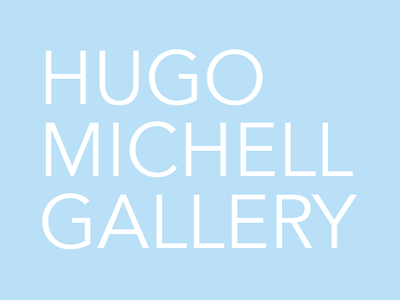COUNTOUR 556
2020
'Countour 556' by Kyla McFarlane
It’s a readymade canvas both epic and contained. An Australian flag, clearly a little worse for wear. It’s huge – large enough to have once flown above Parliament House in Canberra, the very epicentre of the political nation. This gives it its own public life, a singular object’s history that is also wrapped up in the history of our federated, young nation. Expansive in scale, this object also provides a conceptual boundary, a historical and political framing that lends symbolic weight to Richard Lewer’s intervention.
Throughout the decades of his practice, and even before, Lewer has written many short texts. He paints them on his studio walls, on pieces of foam, on pinboards and pool table covers, maps and other objects with previous lives, histories of their own. Here, in the artist’s recognisable, wonky hand, we see a sentence painted in white: ‘I can’t run away all my life sometimes I just have to stand and fight’. The words spell out a personal mantra or instruction, an affirmation that might be adopted in the face of bullying, or the battleground of individual trauma. It’s poignant and vulnerable, seeking ballast.
Sprawled across this massive, loaded backdrop of the flag, the words are imbued with broader, more socio-political readings and associations. Reading them in this context, we might reflect on what it might mean for Australia, itself built on unceded land, to stand up for itself. What does that look like globally, and what does it look like for those within it, especially those at its margins? This switch between singular and societal that the text performs is similar to the effect created by Lewer when he painted the phrase ‘I must learn to like myself’ across another very large Australian flag as part of his series A History of Australia. How might an individual, and a nation, gain self-love and worth, and what are the consequences?
And what does it mean to scrawl a text across this flag? We know that there are rules around such things, that Lewer’s interventions are, at the least, provocations. They might be read by some as desecrations, depending on your relationship to the flag, and the nation, in question. But their sincerity and singularity – underlined by the presence of the ‘I’ – suggests something more complex, more questioning. It is a strangely tender articulation of an artist in conversation, not just with himself, but with the complexities of the world, the country, and the historical moment in which he finds himself.



